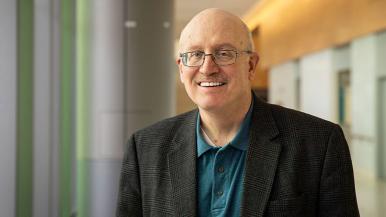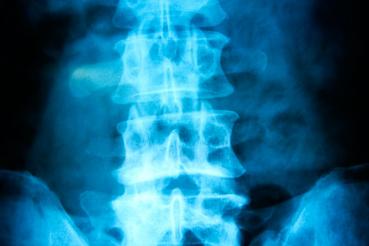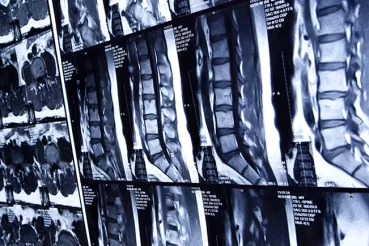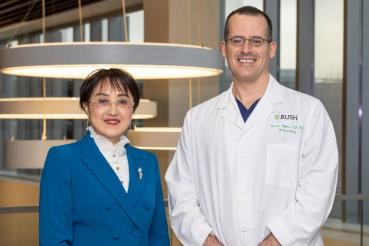After a surgical procedure or the diagnosis of a disability, most patients are eager to return to their normal lives. Of course, this isn’t always immediately possible if there is a change in the patient’s mobility or balance.
That’s where physical medicine and rehabilitation, or PM&R, comes in.
What is PM&R?
PM&R is a field of medicine that focuses on helping those recovering from disease or surgery regain as much normalcy and independence as possible. PM&R physicians are known as physiatrists, and they diagnose and treat a variety of medical conditions that affect the brain, spine, nerves and musculoskeletal system.
In the first half of the 20th century, while two world wars and a polio epidemic raged, the medical community made advances that saved the lives of more patients and soldiers than ever before. This led to the rise of a new population: those who were disabled by injury or disease.
Today, physiatrists like Rush’s Sheila Dugan, MD, use their expertise, the most advanced technology and excellent diagnostic skills to help patients who are facing a disability restore their function to the highest possible level.
Helping patients recover
Recently, Dugan worked with Tom Dent, a patient who had a gait disorder that was holding him back. Despite having surgery for spinal stenosis several years ago, Tom was still struggling with everyday tasks like getting in and out of a car or getting up from a chair.
“Of course, I was appreciative of the surgeon,” Dent says. “But after surgery, I was still in pain. So I met with Dr. Dugan, who helped me retrain my body and build muscle memory. Going through therapy is not an easy journey when you have an underlying condition, but Dr. Dugan was enthusiastic and positive every step of the way.”
Dugan had to use all her diagnostic skills to develop a treatment plan that worked for Tom’s individual issues.
“He had acute back pain that met the criteria for spinal surgery, and removing the affected tissue should have resulted in less pain,” Dugan says. “He had a compelling combination of neurological and orthopedic problems, but his main complaint was that he wasn’t walking well — his right foot was scuffing the floor when he walked, he was tripping over his feet and he was struggling with motor function.”
A personalized treatment plan
After a thorough workup didn’t reveal Parkinson’s disease or other movement disorders as the root of his problems, Dugan noted that Tom was responding well to individualized physical therapy and decided to pursue that path.
Dugan reached out to her new partners at Rush PT, and they selected a program called LSVT BIG, a highly customized treatment that addresses the small, slow and deliberate movement challenges that are common in people who have Parkinson’s and other neurological conditions like Tom. The treatment focuses on improving patients’ quality of life by training people to produce bigger motions.
The program Dugan and the team designed for Tom included 16 physical therapy sessions over four weeks, in addition to homework exercises that he would do twice a day. During the physical therapy sessions, Tom worked on both fine and gross motor skills with physical therapists Elisabeth Ritzenthaler and Abby Lorber. He reported and demonstrated significant change at his follow-up appointment with Dugan, who noted his steadfast commitment.
“I worked on all kinds of different movements: standing up out of a chair — sometimes without using my hands. I also worked on reaching, twisting and extending my body to keep it from getting tight, and stepping over things,” Dent says. “The work was very pragmatic but not easy. A big part of it was not getting discouraged and seeing the measurable improvements I was making. Physical therapy is more than being supported. You also have to push yourself. My therapists had the right balance of being both drill sergeants and cheerleaders.”
Improved quality of life
Throughout his journey, Tom’s team helped him improve his motor skills. He learned to take steps that felt larger and more exaggerated than he was used to, but were, in fact, more average strides.
“Not falling is my primary concern, so for the last couple weeks of therapy we focused on strength and balance,” Dent says. “I worked a lot more on steps, stepping over items, reaching for things and balancing in different positions holding onto a bar.”
Since completing his physical therapy program, Tom has reflected on the challenges and triumphs of his journey. He is now able to make his way around his home — even up and down some stairs — with a cane and can get out of a chair with relative ease. Seemingly small touches, such as swinging his arms appropriately when he is walking to assist with balance, are becoming second nature again.
“You begin to feel angry at your body when you can’t do things that were so natural and intuitive before,” he says. “Then you get some sense of satisfaction when you can do these things again, but it takes a lot of work.”




